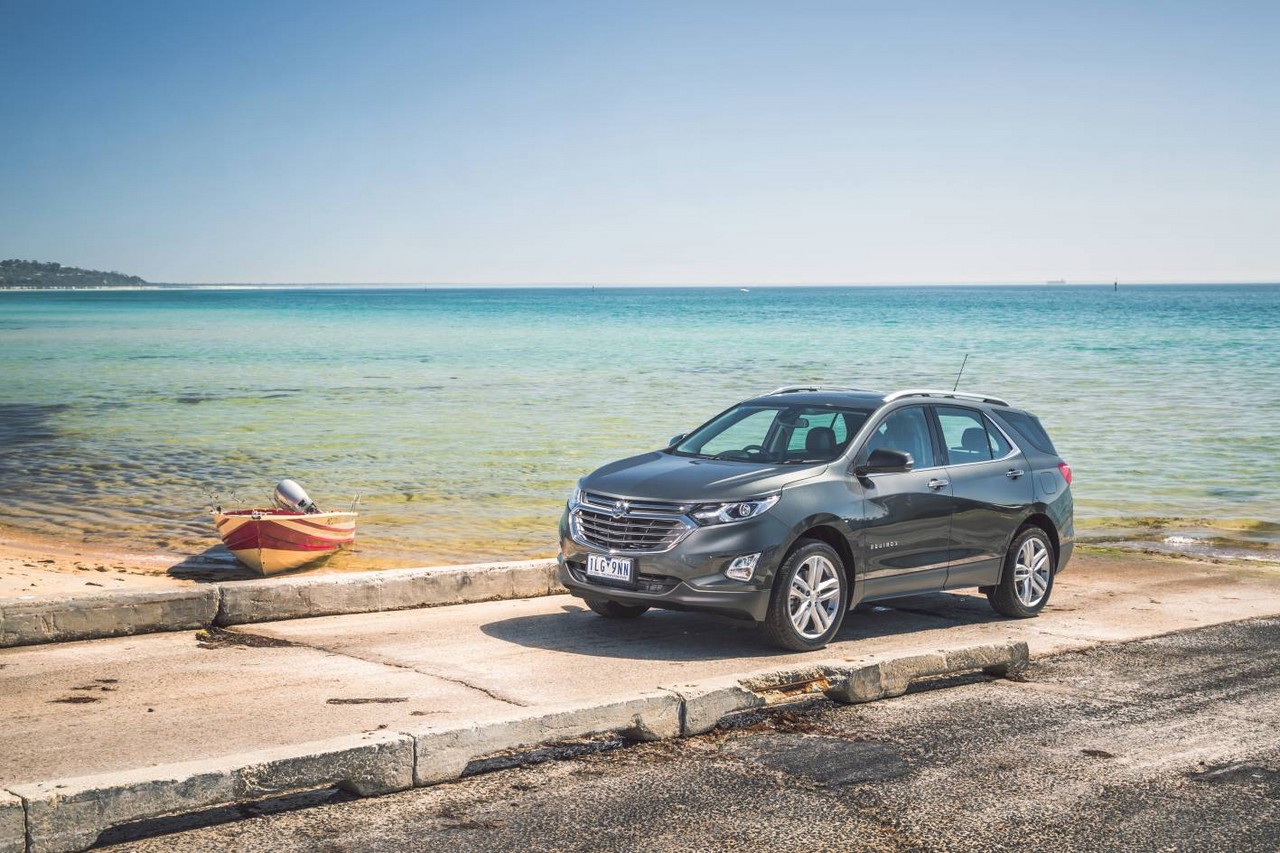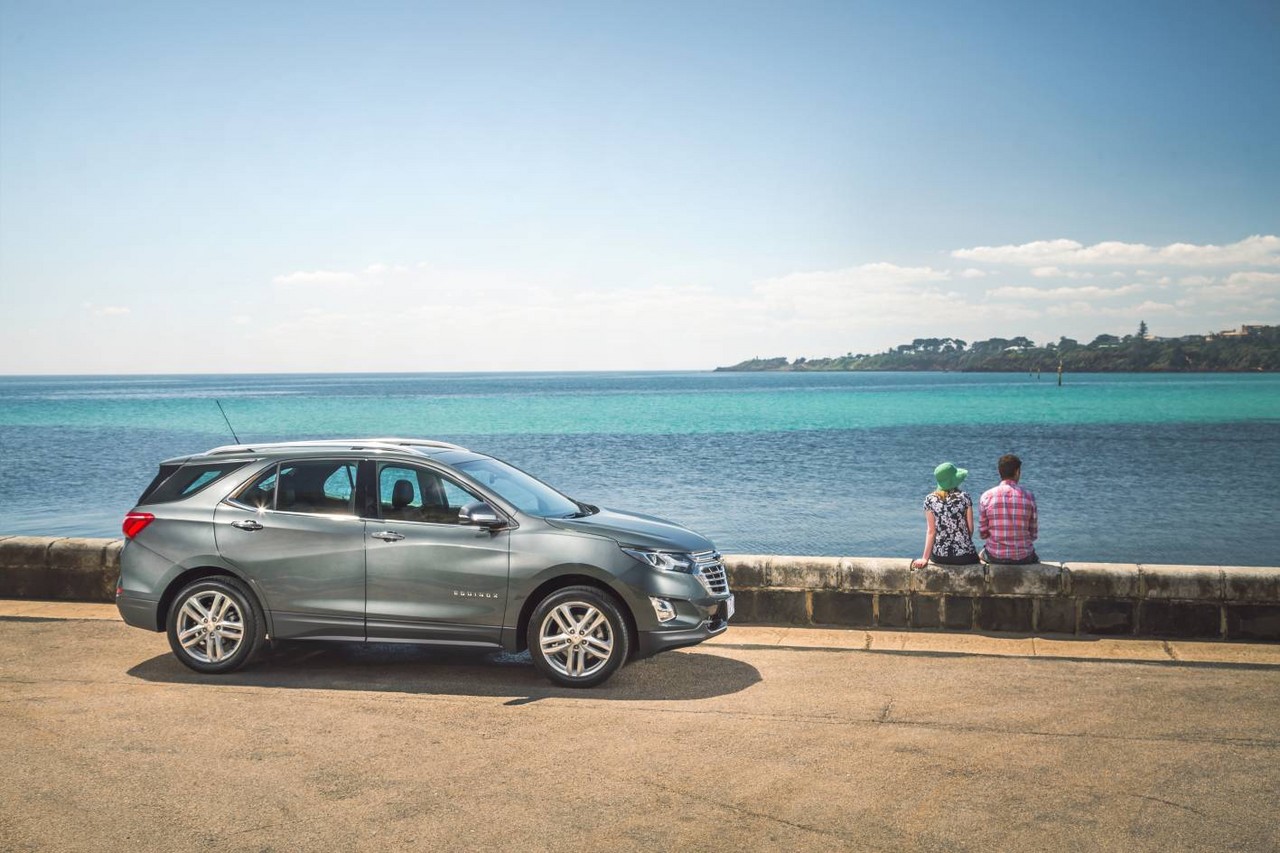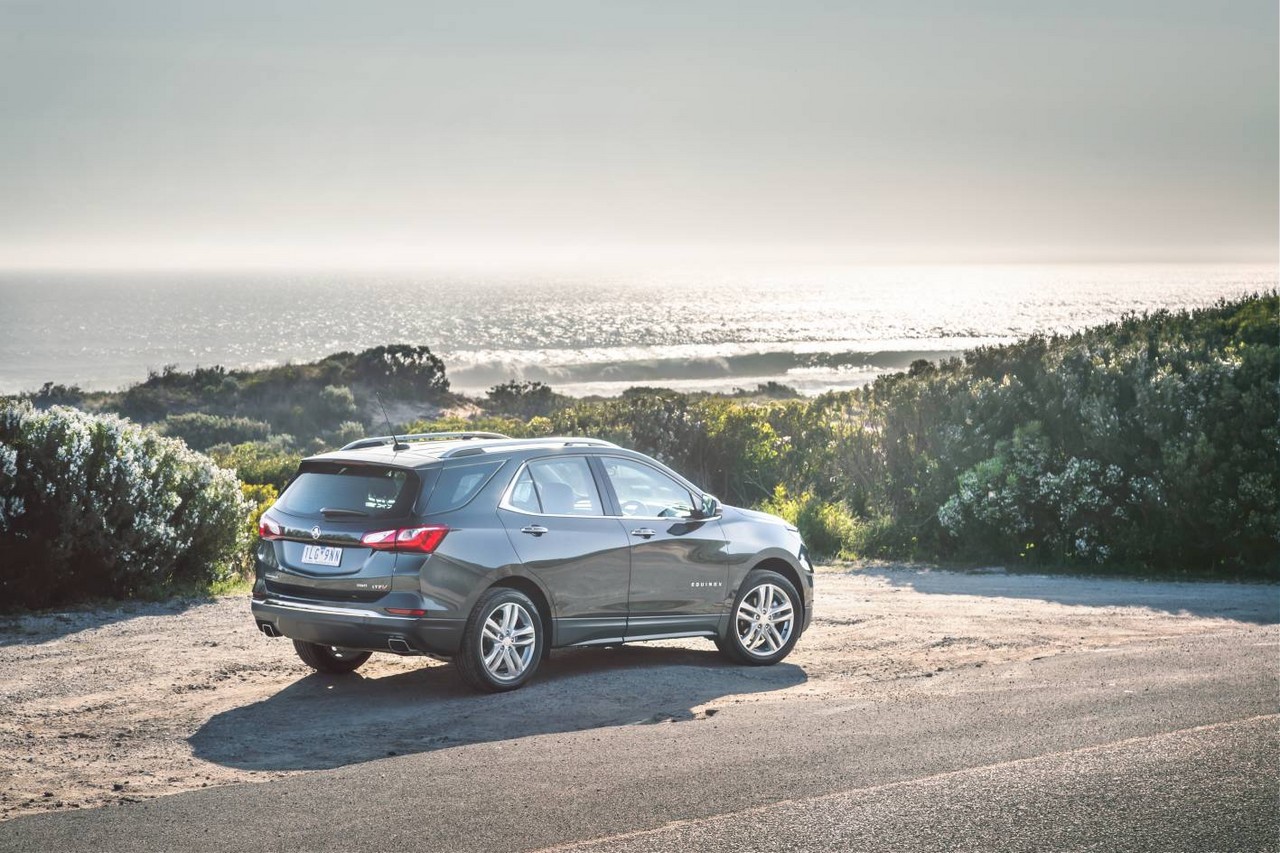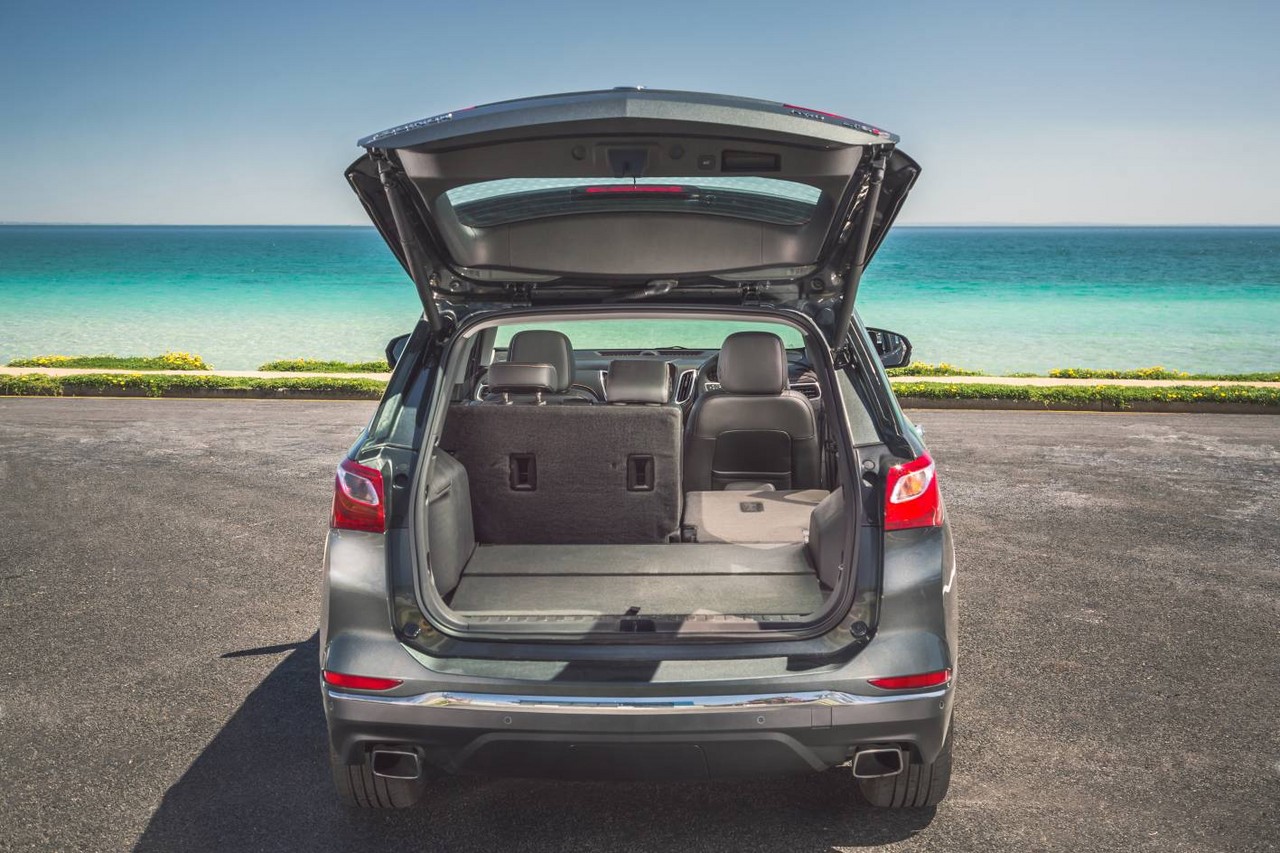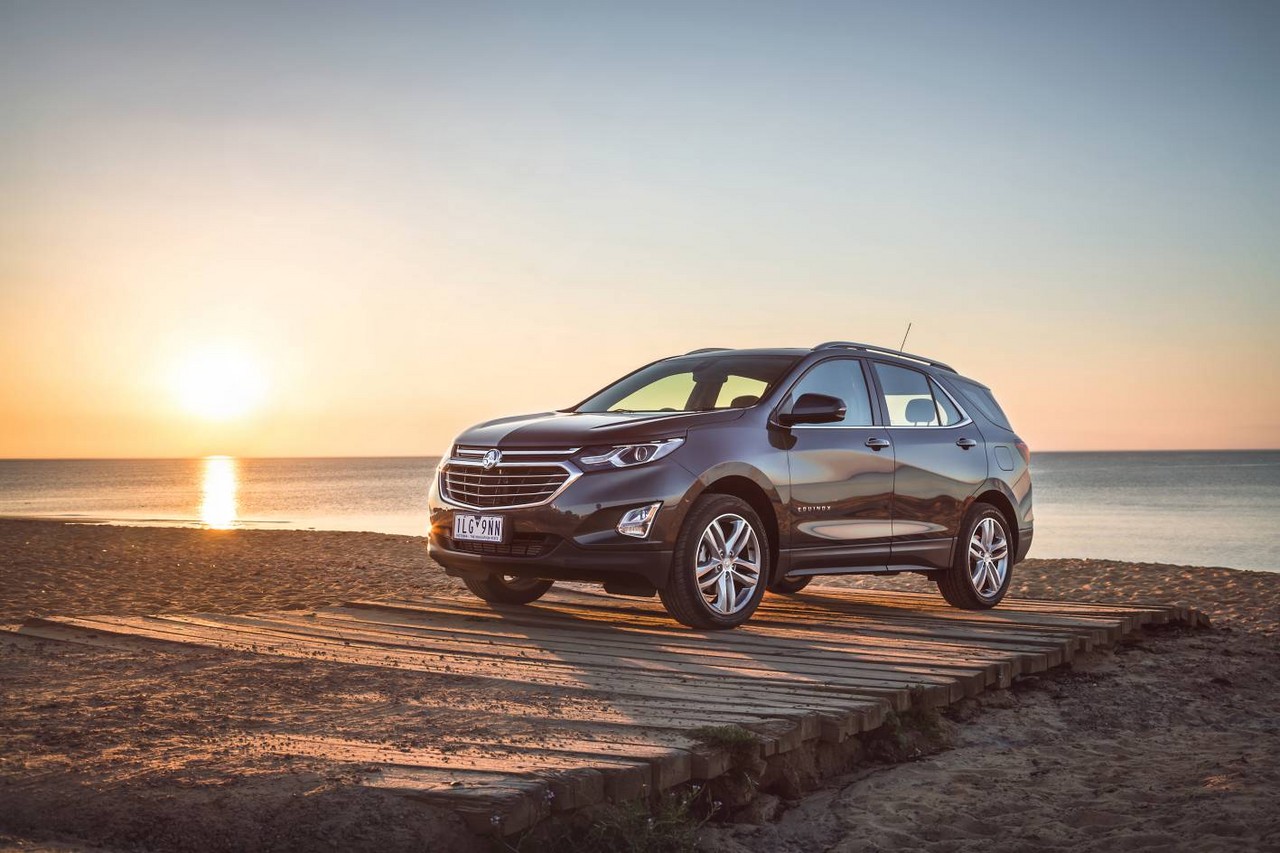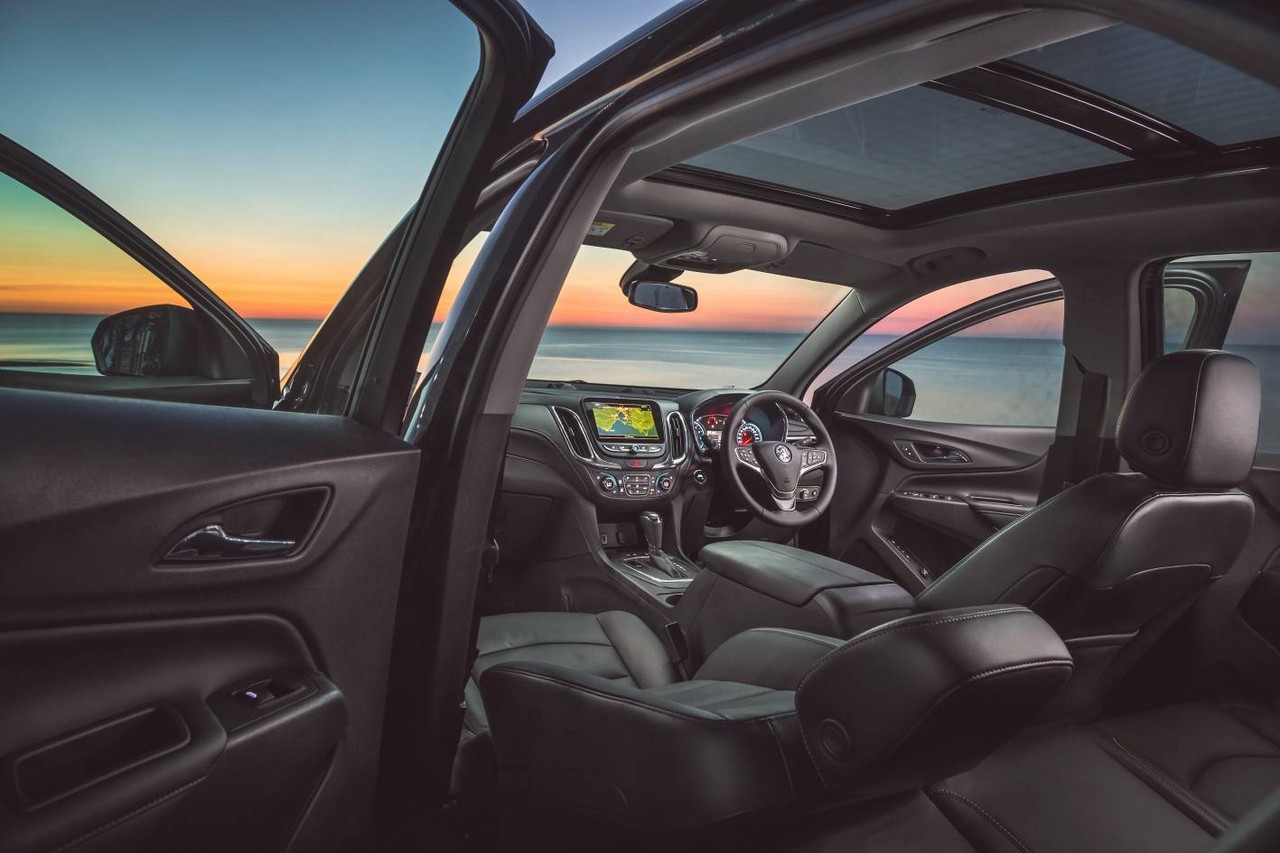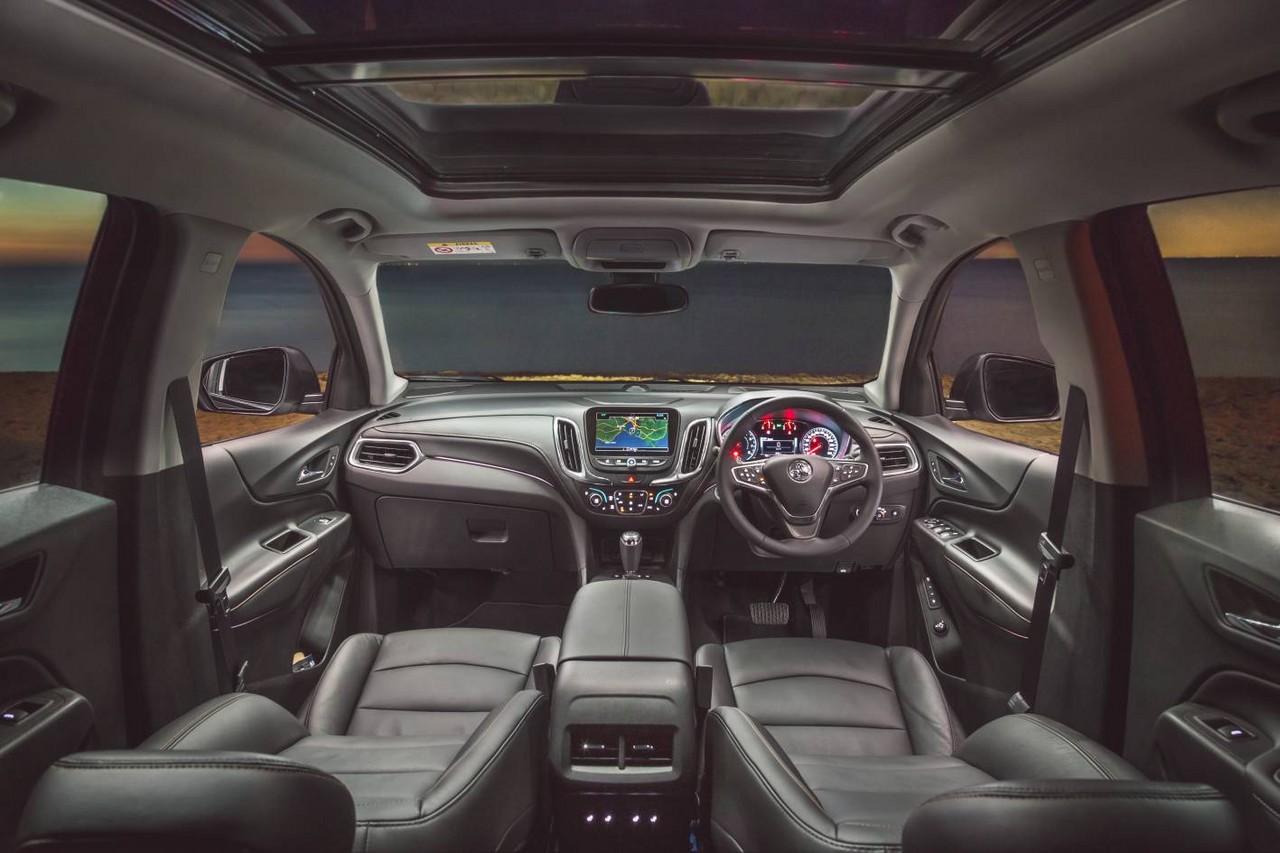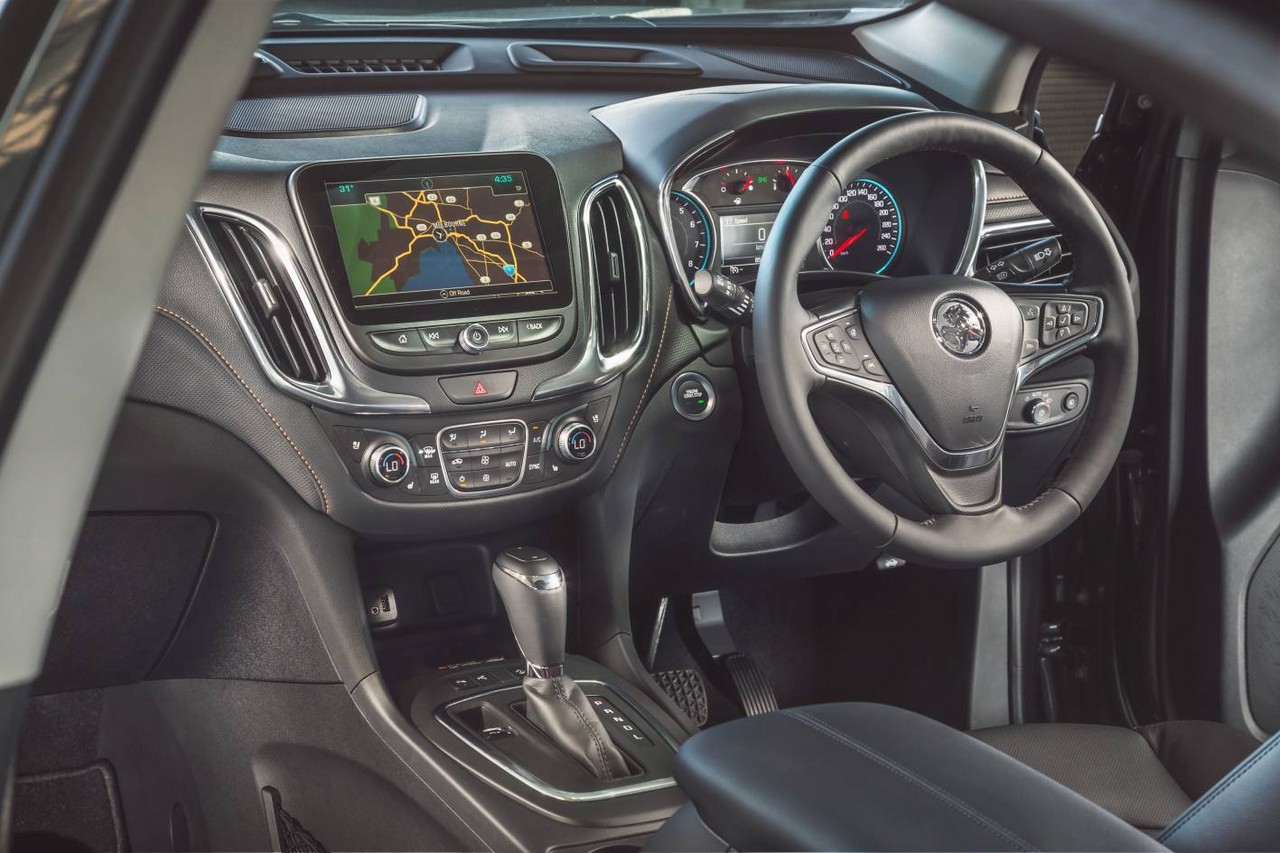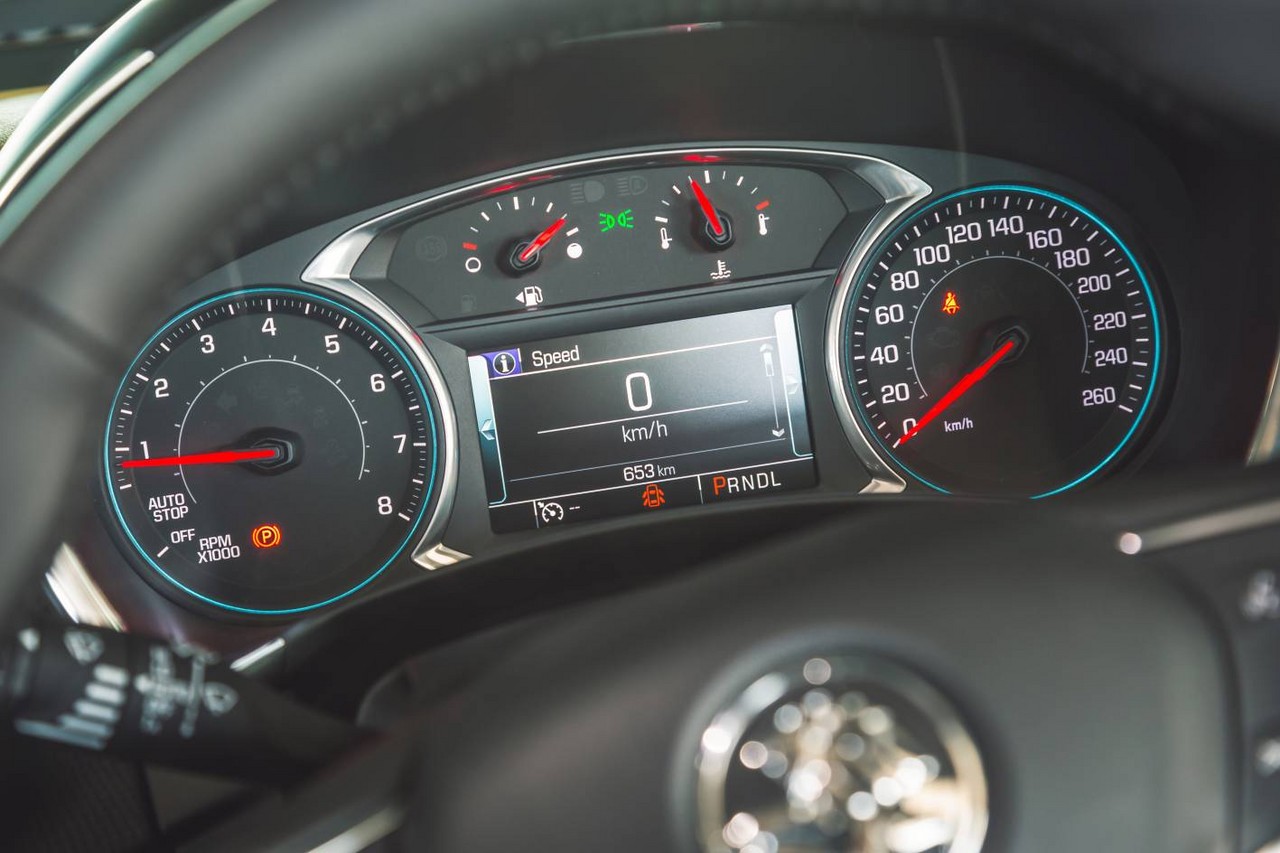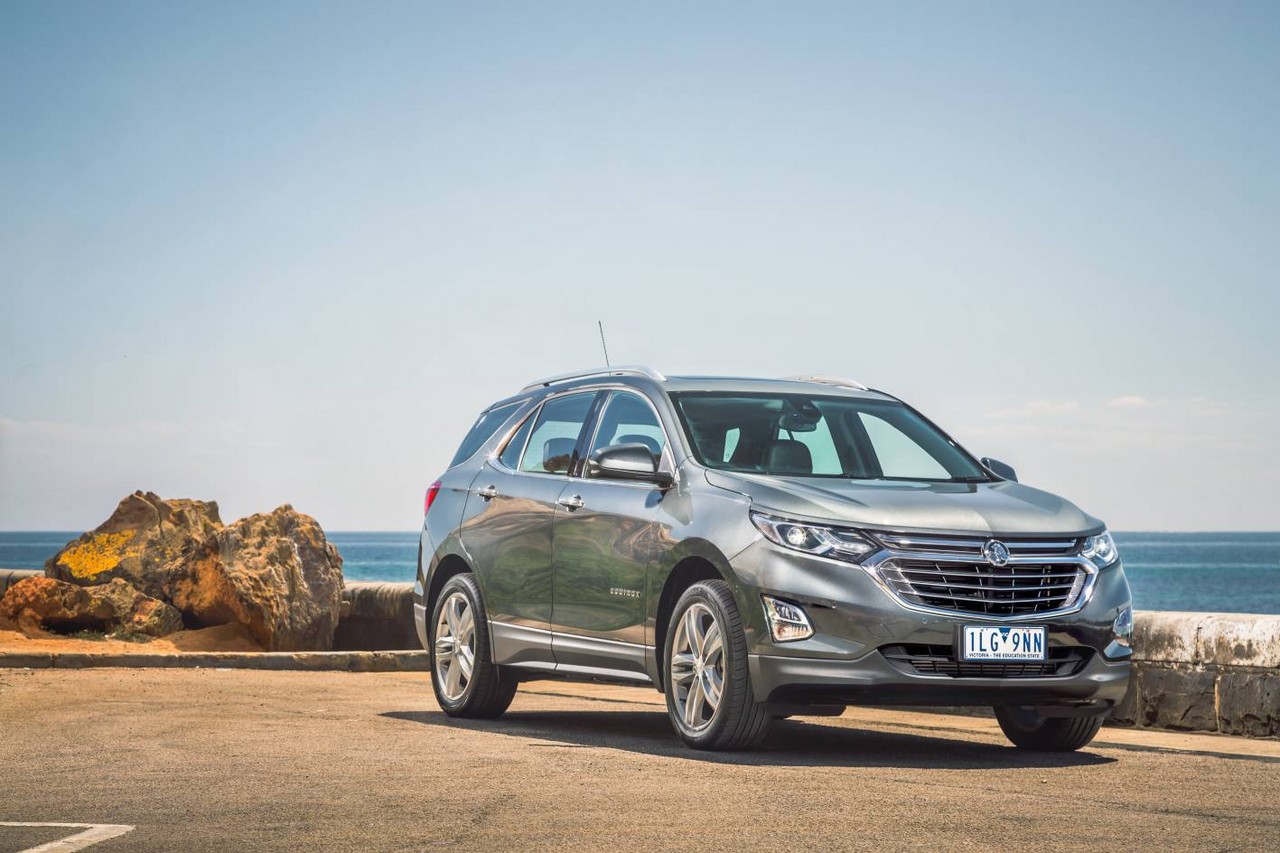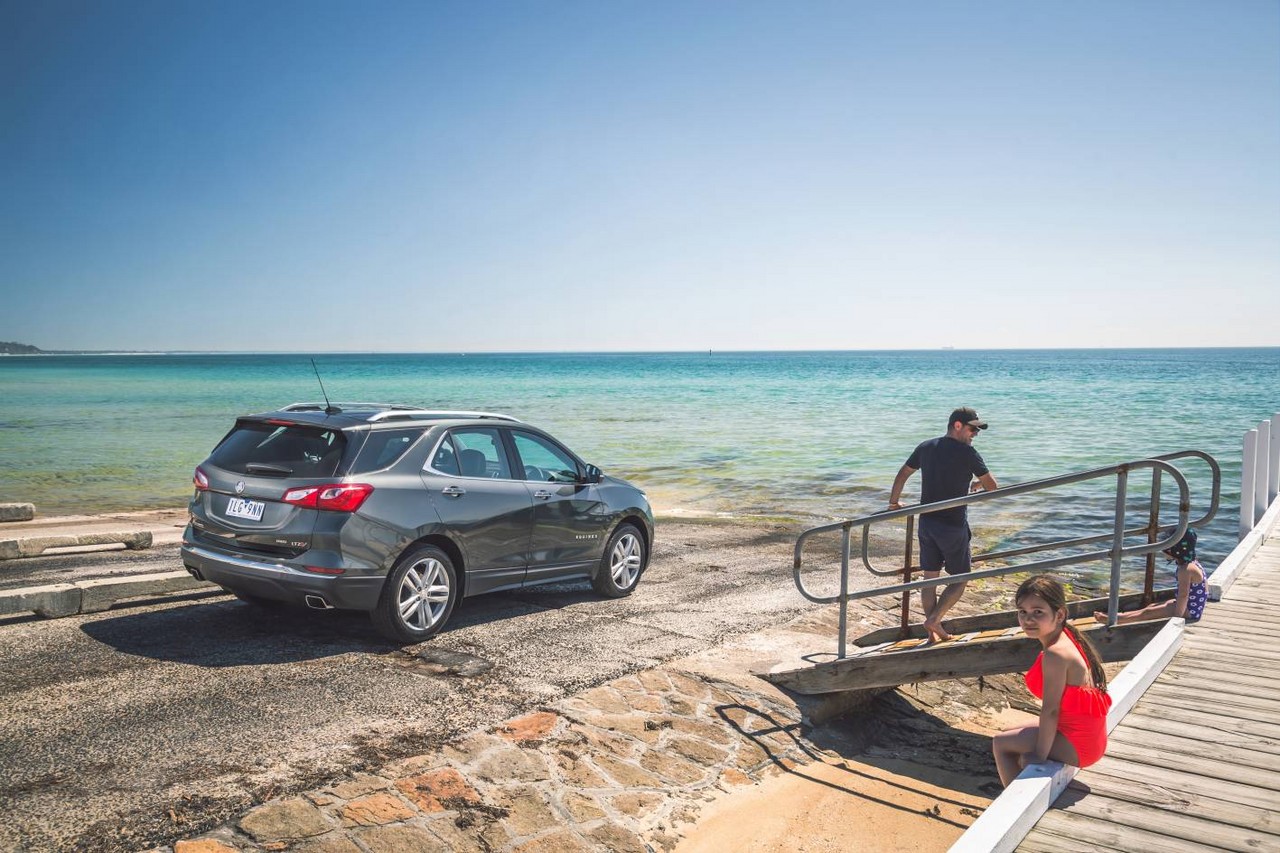
- Spacious interior and cargo area
- Accurate, well-weighted steering
- Unobtrusive stop/start function for petrol engines
- Generally comfortable ride…
- … though suspension lacks low-speed compliance
- Autonomous emergency braking not standard
- Overly sensitive forward collision warning system cannot be adjusted
- For 1.5-litre turbo petrol engine, transmission is quick to upshift and has sluggish downshifts
- Plain dashboard and cheap interior plastics
- Large turning circle for AWD models
- Tyre noise and some cabin vibrations above 60 km/h
Overview
Released in Australia in December 2017, the Holden EQ Equinox was a five-seat, mid-size SUV. Manufactured at General Motors’ plant in San Luis Potosi, Mexico, the front- and all-wheel drive EQ Equinox was initially powered by 1.5- and 2.0-litre turbocharged petrol engines. From May 2018, however, the Equinox was available with a 1.6-litre turbo diesel engine (see table below). Beyond the engine-based variants, the EQ Equinox range consisted of LS, LS+, LT, LTZ and LTZ-V editions.
Within Holden’s range, the Equinox effectively replaced the Holden CG2 Captiva 5 .
| Engine | Drive | Edition | Trans. | Peak power | Peak torque | |
|---|---|---|---|---|---|---|
| 1.5T | 1490 cc LYX turbo petrol I4 | FWD | LS | 6sp man. | 127 kW at 5600 rpm | 275 Nm at 2000-4000 rpm |
| LS, LS+ |
6sp auto (6T40) |
|||||
| 2.0T | 1998 cc LTG turbo petrol I4 | FWD | LT, LTZ |
9sp auto (9T50) |
188 kW at 5500 rpm | 353 Nm at 2500-4500 rpm |
| AWD | LTZ, LTZ-V |
|||||
| 1.6TD | 1600 cc LH7 turbo diesel I4 | FWD | LS+, LT, LTZ, LTZ-V |
6sp auto (6T45) |
100 kW at 3000-4000 rpm | 320 Nm at 2000-3000 rpm |
All-wheel drive system
T
The Holden EQ Equinox had a pro-active all-wheel drive system which utilised an electro-hydraulic clutch pack mounted to the rear differential. In normal conditions, the all-wheel drive components were disengaged so that the engine’s torque was directed to the front wheels to optimise fuel efficiency. By monitoring vehicle speed, throttle position, steering angle and yaw, the system could determine if torque should be directed to the rear wheels. If so, the clutch pack would engage and up to 50 per cent of the engine’s torque could be directed to the rear wheels (i.e. a 50:50 front:rear torque split).
Body and dimensions
The Holden Equinox was underpinned by General Motors’ D2XX platform which was shared with the Holden BK Astra hatch and BK Astra sedan . According to Chevrolet, more than 80 percent of the Equinox’s body structure consisted of ‘high-grade’ steel materials, and nearly 20 per cent consisted of high-strength steel.
Compared to the Holden CG2 Captiva 5 which it replaced, the Holden Equinox was 56 mm longer (at 4652 mm), 6 mm narrower (1843 mm), 56 mm lower (1661 mm) and has an 18 mm longer wheelbase (2725 mm). The Holden Equinox had a cargo volume of 846 litres behind the rear seats (from floor to roof), though this increased to 1798 litres when the rear seats were folded down.
Suspension and steering
The Holden Equinox had MacPherson strut front suspension with coil springs and a direct-acting stabiliser bar. At the rear, the Equinox had four-link independent rear suspension with coil springs, trailing arm and stabiliser bar. For Australia, the suspension of the Equinox had unique front and rear sway bars, front handling bush, front ride bush and rear lower control arm bushes.
The Holden Equinox had rack-and-pinion steering with power assistance provided by an electric motor that is mounted on the rack. Furthermore, the Holden Equinox had a turning circle of 11.4 metres.
Safety equipment
Standard safety equipment for the Holden Equinox included dual front airbags, front seat-mounted side airbags, full-length curtain airbags (i.e. for front and rear occupants), ABS, electronic brakeforce distribution, brake assist, electronic stability control, traction control and front seatbelts with pre-tensioners and load limiters.
The Holden Equinox LS+, LT, LTZ and LTZ-V were also equipped with the following active safety technologies:
- Automatic Emergency Braking (operated at speeds up to 80 km/h);
- Forward Collision Alert with Head-Up Warning;
- Following Distance Indicator;
- Lane Keep Assist and Lane Departure Warning (active at speeds above 60 km/h);
- Side Blind Spot Alert (could detect vehicles approaching from up to 25 metres behind); and,
- Rear Cross Traffic Alert.
Brakes
The Holden EQ Equinox had 321 mm by 28 mm ventilated front brake discs and 288 mm by 12 mm solid rear discs.
ANCAP testing
In ANCAP crash testing , the Holden Equinox received a five star safety rating with an overall score of 34.21 out of 37. In the frontal offset test, protection of the driver’s head and thighs were rated as good, though chest, lower leg and foot protection was rated as adequate (i.e. a slight risk of serious injury). In the side impact test, the curtain airbag became trapped behind trim of the C-pillar – this prevented full deployment of the airbag in the second row and a penalty was applied.
Features: Holden Equinox LS and LS+
As standard, the Holden Equinox LS was equipped with a ‘MyLink’ infotainment unit which featured a six speaker sound system, seven-inch high-resolution touch screen, four USB inputs (two front and two rear), two 12 volt power sockets (front and rear), Bluetooth mobile phone connectivity, Apple CarPlay and Android Auto smartphone integration, and iPod integration with Siri Eyes Free.
Beyond this, standard features for the Holden Equinox LS included 17-inch alloy wheels, air conditioning, cruise control, halogen headlights, LED daytime running lights, a rear view camera, rear parking sensors, dusk-sensing headlights, 60/40 split folding rear seats, remote central locking, power windows and mirrors, a height and reach adjustable steering wheel, an electronic parking brake, a trip computer and an immobiliser. Holden Equinox models with automatic transmissions were also fitted with Active Noise Cancellation which used microphones to detect ambient noises and emitted reverse phase audio signals through the vehicle’s sound system to offset them.
Compared to the Holden Equinox LS, the Equinox LS+ added automatic high-beam assist, a leather-wrapped steering wheel and power folding door mirrors.
Features: Holden Equinox LT
Relative to the Equinox LS+, the MyLink system for the Equinox LT had an eight-inch colour touch screen and satellite navigation with live traffic updates. The Holden Equinox LT was also equipped with 18-inch alloy wheels, dual-zone climate control air conditioning, heated front seats, HID (high intensity discharge) headlights, front parking sensors, one-touch 60/40 split-folding rear seats with rear cargo release.
Features: Holden Equinox LTZ and LTZ-V
Compared to the Equinox LT, the Equinox LTZ featured 19-inch alloy wheels, a Bose premium audio system, digital radio tuner (DAB+), leather seat trim, an eight-way power adjustable driver’s seat with memory settings, LED head- and tail-lights, rain-sensing wipers, wireless mobile phone charging, roof rails, a power-operated tailgate with hands-free operation and ‘Advanced Park Assist’ for semi-automated perpendicular and parallel parking.
The range-topping Holden Equinox LTZ-V was distinguished by its ventilated front seats, power adjustable front passenger seat with memory settings, heated steering wheel and dual-panel panoramic sunroof.
Pricing and specifications
